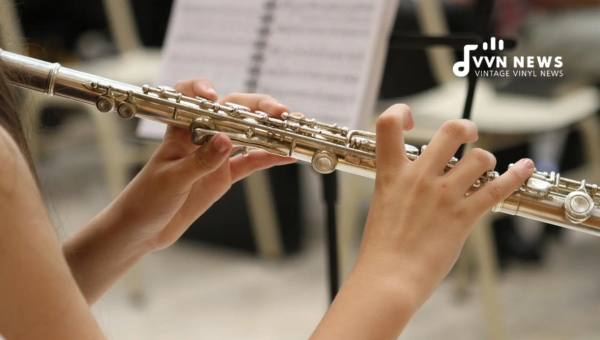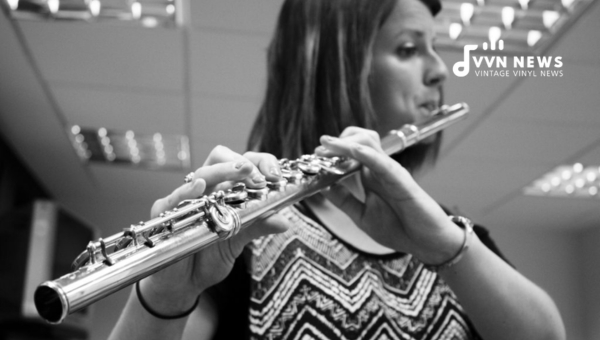Flute playing, among its many charms, holds this unique challenge: creating beautiful melodies while mastering an ever-complex dance with your breath.
So here’s your guide to effortless breathing for flute players, a way to elevate your performance and enjoy your instrument even more. Your flute isn’t just a piece of entertainment; it’s an extension of you, reflecting the rhythm and power of your very breath.
In today’s discussion, we’ll unravel the mystery behind perfecting that balance between intake and outflow of breath for creating those melodious tunes you adore so much.
We’ll dive into proven techniques and useful tips designed specifically with you in mind – all to liberate your playing style from the constraints of breathlessness.
This way, the enriching journey of being a flutist becomes not only one about hitting the perfect notes but also synchronizing harmoniously with your own breathing pattern.
What Is Effortless Breathing for Flute Players?
Effortless breathing for flute players refers to the ability to produce a steady and controlled stream of air while playing the flute without any tension or strain.
It is a vital aspect of flute playing that directly affects the sound quality, dynamics, and overall performance. When flutists achieve effortless breathing, they are able to support their sound production fully and play with greater expression and consistency.
Importance of Effortless Breathing
Effortless breathing allows flutists to have better control over their tone, dynamics, and intonation. It helps in producing a full and resonant sound that carries well.
When you breathe effortlessly, you can sustain long notes without wavering or losing breath control. This is particularly important in playing phrases that require smooth transitions between notes.
Body Alignment and Breath Support
Proper body alignment plays a crucial role in achieving effortless breathing. Maintaining good posture while playing the flute allows for optimal lung expansion and efficient airflow.
Ensure that your back is straight, your shoulders relaxed, and your head aligned with your spine. Your flute should be held at a comfortable angle so that it facilitates easy airflow without any strain.
Deep Diaphragmatic Breathing
A key aspect of effortless breathing is deep diaphragmatic breathing. Instead of shallow chest breaths, which limit breath capacity and control, flutists should focus on engaging the diaphragm, the muscle below the lungs to draw air deep into the lower abdomen.
By expanding the lower abdomen as you inhale deeply, you allow more air to flow into your lungs and provide better support for your sound production.
Also Read: Christmas Flute Books [Best Picks For Festive Melodies]
Breathing Exercises for Flutists
Several breathing exercises can help improve breath control for flute players:
- Lip Buzzing: Place your lips together gently and blow through them to create a buzzing sound. This exercise helps develop breath control by focusing on the air stream and lip tension.
- Sustained Inhalation and Exhalation: Inhale deeply, hold your breath for a few seconds, and then exhale slowly and steadily. This exercise helps expand lung capacity and control exhalation while maintaining steady airflow.
- Alternate Nostril Breathing: Close one nostril with a finger and inhale deeply through the other nostril. Then, close the other nostril, release the first nostril, and exhale through it. This exercise helps balance airflow between both nostrils, promoting even breath support.
Practice Makes Perfect
Effortless breathing is not something that can be achieved overnight. It requires consistent practice and mindful awareness of your breath technique. Incorporate regular breathing exercises into your practice routine to strengthen your breath control muscles, increase lung capacity, and develop a natural understanding of how to produce an effortless breath while playing the flute.
Remember to remain relaxed throughout your practice sessions and performances, as tension can hinder your breathing.
With time and patience, you will discover that effortless breathing enhances your overall flute-playing experience by allowing you to express yourself through the instrument with ease and confidence fully.
How Can Proper Posture Improve Breath Control?

Proper posture is essential for flute players as it directly impacts breath control and overall playing technique.
When we talk about proper posture, we mean maintaining a balanced and aligned position that allows for optimal breathing and airflow. Here are some key points to consider:
Align your body vertically
- Sit or stand up straight with your spine elongated.
- Keep your head centered over your shoulders.
- Avoid slouching or leaning to one side.
Relaxed shoulders
- Lower your shoulders and let them relax naturally.
- Tension in the shoulder muscles can restrict breath flow.
Open chest and expanded ribcage
- Lift and open your chest, allowing the ribcage to expand.
- This creates more space within the lungs for deeper breaths.
Engaged core muscles
- Gently activate your abdominal muscles without straining.
- A firm core helps support proper breathing techniquess.
Balanced weight distribution
- Spread your weight evenly between both feet (if standing) or sit evenly on both buttocks (if seated).
- Avoid leaning forward or backward, as it can disrupt breath control.
Maintaining proper posture helps create a clear path for air to flow through the body while playing the flute. It allows for greater lung capacity and a more controlled airflow, and reduces tension that can impede sound production.
By consciously practicing good posture during rehearsals and performances, flutists can achieve improved breath control, resulting in better tone quality, stamina, and musical expression.
Also Read: 11 Best Beginner Flute Books [Start Your Melodic Journey Right]
What Are the Best Breathing Exercises for Flutists?
To enhance your breathing technique and cultivate effortless breath control, incorporating breathing exercises into your flute practice routine is essential.
These exercises not only strengthen your lung capacity but also help develop the muscles required for proper breath support. Here are some of the best breathing exercises for flutists:
Deep Breathing
- Sit or stand with proper posture, allowing your body to relax.
- Inhale deeply through your nose, feeling your abdomen expand.
- Exhale slowly and controlled through pursed lips, emptying your lungs completely.
- Repeat this exercise 5-10 times, gradually increasing the length of inhalation and exhalation.
Sustained Note Exercise
- Choose a comfortable note on your flute.
- Take a full breath and play the note with a controlled and steady stream of air.
- Sustain the note for as long as possible, aiming for a consistent sound until you run out of breath.
- Keep practicing this exercise, gradually extending the duration of each sustained note.
Interval Breathing
- Start by playing a slow and comfortable scale on your flute.
- Inhale deeply before reaching each new note while maintaining a steady sound throughout.
- Experiment with different intervals to challenge yourself while maintaining smooth and controlled breaths.
Flutter Tonguing
- Play a long note on your flute while simultaneously fluttering/trembling your tongue against the roof of your mouth or the back of your top teeth.
- Focus on maintaining an even airflow and consistent sound throughout the exercise.
Remember to practice these exercises regularly to develop muscle memory and improve respiratory control.
By incorporating these techniques into your flute practice routine, you will ultimately enhance your overall sound production and achieve effortless breathing while playing.
How Does Diaphragmatic Breathing Benefit Flute Performance?

Diaphragmatic breathing, also known as belly breathing or deep breathing, is a technique that involves engaging the diaphragm muscle to facilitate proper airflow and breath support.
This technique has significant benefits for flute performance. Here’s how diaphragmatic breathing can enhance your flute-playing experience:
Improved Breath Control
Diaphragmatic breathing allows for better control over the exhalation of breath, resulting in more precise articulation and phrasing while playing the flute.
Also Read: How To Upgrade Your Flute? [A Comprehensive Buying Guide]
Enhanced Tone Quality
By engaging the diaphragm, you can produce a richer and fuller sound on the flute. This is because when you breathe deeply from your lower abdomen, you allow more air to flow through the instrument, creating a resonant and vibrant tone.
Increased Endurance
Flute playing requires sustained breath support for long phrases and extended performances.
Diaphragmatic breathing helps increase lung capacity, allowing you to maintain controlled breath throughout your playing sessions.
Reduced Tension
When you use your diaphragm for breathing, it alleviates tension in other muscles, such as those in your shoulders and neck.
This relaxed state improves overall technical fluency and prevents strain or fatigue while playing.
Incorporating diaphragmatic breathing into your practice routine can significantly enhance your flute-playing skills.
Take the time to focus on this technique during warm-ups and exercises to develop strong breath control and ultimately achieve effortless breathing when performing on stage or in rehearsals.
What Techniques Can Help Increase Lung Capacity?
Increasing lung capacity is essential for flute players as it allows for longer and more controlled breaths, resulting in improved endurance and sustained playing ability.
Here are some techniques that can help boost your lung capacity:
- Pursed lip breathing: Pursed lip breathing involves exhaling through slightly pursed lips, which creates resistance to the airflow. This technique helps strengthen the muscles used for breathing and increases lung capacity over time.
- Deep breathing exercises: Practicing deep breathing exercises regularly can expand your lung capacity. Start by inhaling deeply through your nose, allowing your abdomen to expand fully. Hold your breath for a few seconds, and then exhale slowly through your mouth. Repeat this exercise several times a day.
- Interval training: Engage in interval training activities like brisk walking or swimming to improve cardiovascular fitness and strengthen your lungs.
- Yoga and meditation: Practices such as yoga and meditation focus on deep, controlled breathing techniques that can enhance lung capacity and respiratory control.
- Playing long tones: Incorporate long-tone exercises into your daily practice routine. These exercises involve holding out a single note for an extended duration, helping you develop greater control over breath support and lung capacity.
Increasing lung capacity is a gradual process that requires consistent practice and patience. By incorporating these techniques into your routine, you can gradually improve your flute playing performance by enhancing your breath control and endurance.
How Can Flute Players Maintain Effortless Breathing During Performances?

When it comes to flute playing, maintaining effortless breathing during performances is essential for both technical precision and musical expression.
Here are some tried and tested strategies to help flute players maintain a steady and controlled breath while on stage:
Also Read: 10 Best Flutes For Beginners [Top Picks To Start Your Journey]
Practice Breath Control Exercises
Prior to your performance, warm up with specific breath control exercises. One effective exercise is the “Sustained Note Exercise.”
Choose a long note from your repertoire and play it softly first, gradually increasing the volume.
Focus on maintaining a steady airflow throughout the duration of the note. This exercise builds endurance and strengthens your breath support.
Mind Your Posture
Posture plays a crucial role in establishing efficient breath control. Sit or stand tall with your back straight and shoulders relaxed. Keep your chest open, allowing for unrestricted lung expansion as you take in air.
Incorporate Meditation Techniques
Meditation techniques, such as deep breathing exercises and mindfulness, can greatly improve breath control during performances. Practice deep inhales through your nose, expanding your abdomen, followed by slow exhales through pursed lips. Focus on creating a continuous flow of air without tension or unnecessary pauses.
Visualize Your Breath Flow
Visualization can be a powerful tool to improve breath control during performances. Close your eyes before playing, and imagine a smooth and constant stream of air flowing through the flute as you play each note. Visualizing this flow will help you maintain consistent breathing patterns.
Manage Performance Anxiety
Nervousness can disrupt proper breathing patterns during performances. Learn relaxation techniques such as progressive muscle relaxation and controlled breathing to manage anxiety effectively.
Pacing Techniques
Strategically plan where to take discreet breaths within musical phrases or at natural musical breaks without interrupting the overall fluidity of the piece.
Maintaining effortless breathing requires practice and patience. Incorporate these techniques into your regular practice routine and observe how they transform your flute playing.
FAQs about Effortless Breathing for Flute Players
How can proper posture improve breath control?
Maintaining an upright posture while playing the flute allows your lungs to expand fully, enabling better breath control and supporting a more resonant sound.
What are some effective breathing exercises for flutists?
Breathing exercises like the “Four-Part Breath” or “Pursed Lip Breathing” can help strengthen your diaphragm, increase lung capacity, and improve breath control for flute playing.
Why is diaphragmatic breathing beneficial for flute performance?
Diaphragmatic breathing encourages deep inhalations by engaging the diaphragm muscle, allowing flutists to produce a richer sound and sustain long notes more effortlessly.
Can techniques help increase lung capacity for better breathing?
Yes, techniques such as inhalation and exhalation counting, progressive rib expansions, and long-tone exercises can help increase lung capacity and improve overall breath support.
How can flute players maintain effortless breathing during performances?
By practicing slow deep-breathing exercises before performing, maintaining good posture, and continuously focusing on proper breath support technique when playing, flute players can ensure effortless breathing throughout performances.
Conclusion
Mastering effortless breathing techniques is vital for flute players to produce a beautiful sound, maintain control, and sustain long notes.
By focusing on proper posture, engaging the diaphragm through deep breaths, and incorporating breathing exercises and techniques into your practice routine, you can significantly improve your breath support and enhance your flute playing experience.
Remember that consistent practice and mindfulness are key to developing these skills. So take a deep breath, find your rhythm, and let the music flow effortlessly through your flute.








